What are some of the characteristics of Nokia's implementation of non-stop routing? (Choose two)
Click the exhibit button.
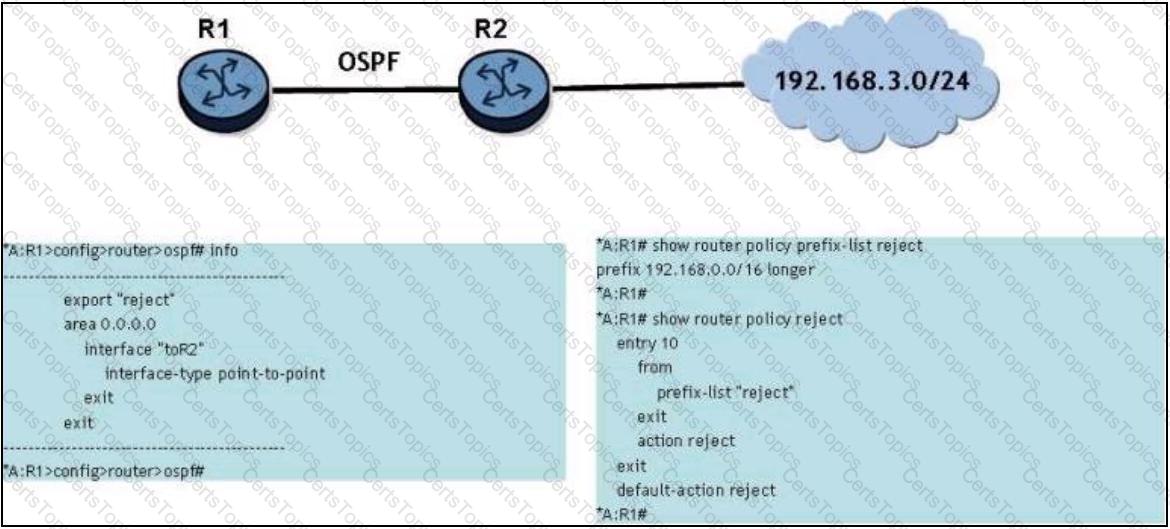
Router R2 advertises the network 192.168.3.0/24 to router R1 via OSPF. A route policy has been constructed to discard the route on router R1; however, it is not working. What is the problem?
Click on the exhibit.
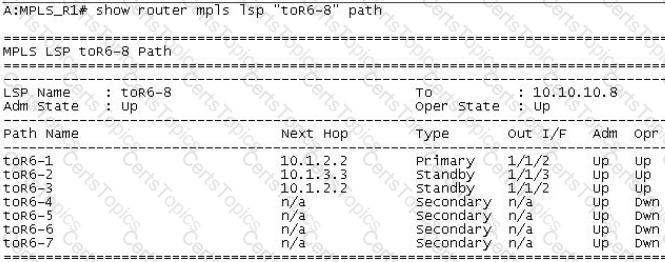
If the primary path fails, which backup LSP path will the head-end router pick first?
Click the exhibit.
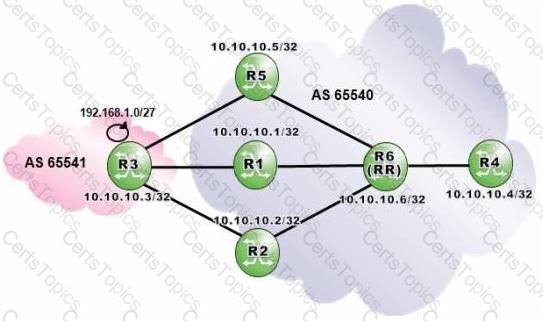
Router R6 is a route reflector with clients R1, R2, R4 and R5. Router R4 receives three routes from router R6 and is configured with ECMP 3. Given the following BGP configuration on routerR4, how many primary and backup paths will be present in router R4's BGP routing table?
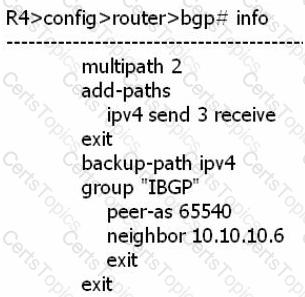
Which of the following regarding MPLS label value assignment is FALSE?
Click on the exhibit.
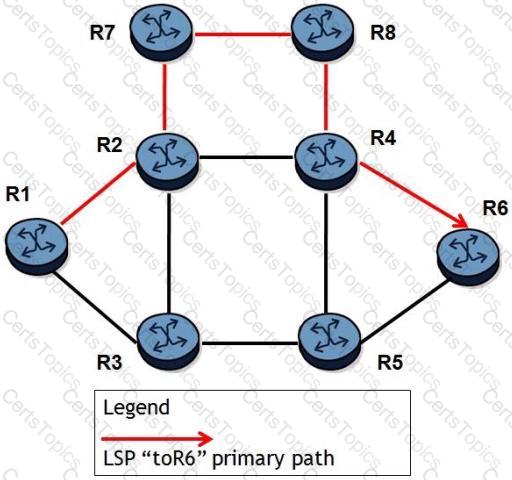
A fully loose LSP "toR6" is configured. All links have the same cost and all routers are Nokia 7750 SRs. The LSP currently traverses the path R1-R2-R7-R8-R4-R6 and the resignal timer is enabled. Which of the following about this LSP is FALSE?
Click on the exhibit button below:
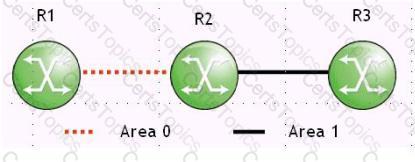
Consider the following:
- Router R2 is an ABR in OSPF Areas 0 and 1.
- Router R2 advertises the aggregate prefix 10.10.10.0/24 into Area 1.
- Router R1 in Area 0 generates LDP labels for FECs 10.10.102/31 and 10.10.10.4/31
Router R3 in Area 1 places these FECs in its LIB, but it does not place them in its LFIB. What can you do on router R3 to make it populate these labels in its LFIB?
Which of the following about Fast Reroute link protection tunnels is FALSE?
Click the exhibit button.
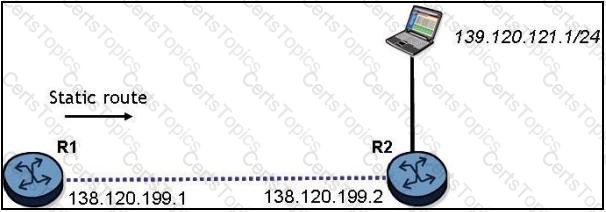
What is the command to configure a static route on the Nokia 7750 SR router R1 to reach the network behind router R2?
Which of the following concerning OSPFv3 is TRUE?
Click on the exhibit.
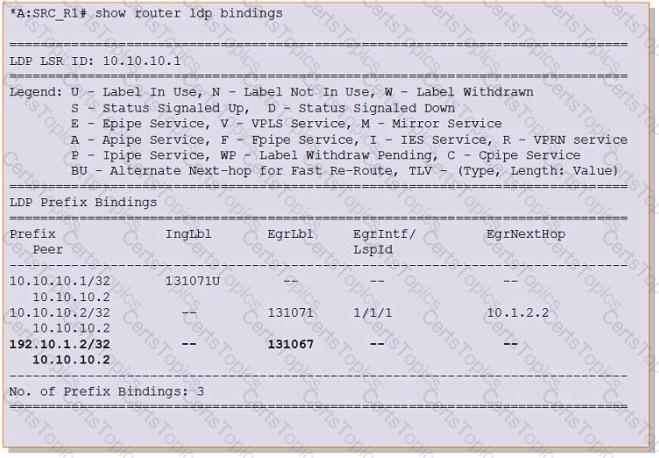
What is the possible reason that the label for prefix 192.10.1.2/32 is not active?
When configuring distributed services across a network, it is considered best practice to configure which of the following parameters as globally significant?
There is an IP host with IP address 10.2.3.1. A static route is created, using the "configure router static-route 10.2.3.0/24 next-hop 10.1.2.1" command. What is the correct traceroute command to test this static route on an Nokia 7750 SR?
Click the exhibit button.
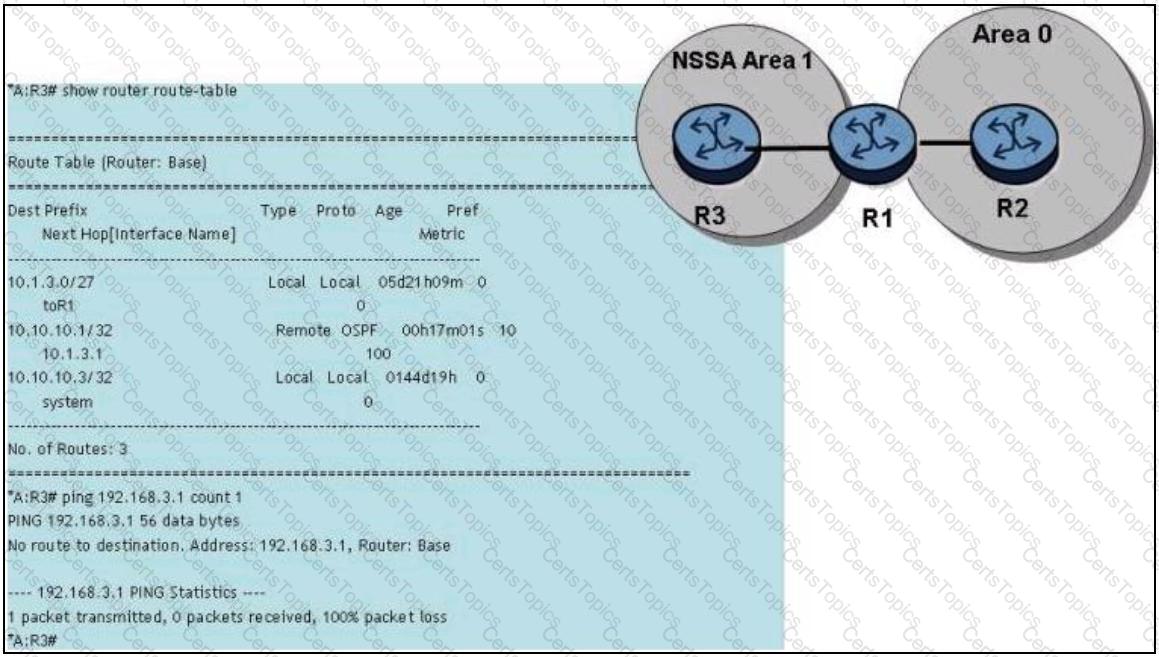
192.168.3.1 is a loopback interface on router R2 and is distributed to OSPF area 0, but the ping fails from router R3. Which of the following is a possible solution to the problem?
Click the exhibit.
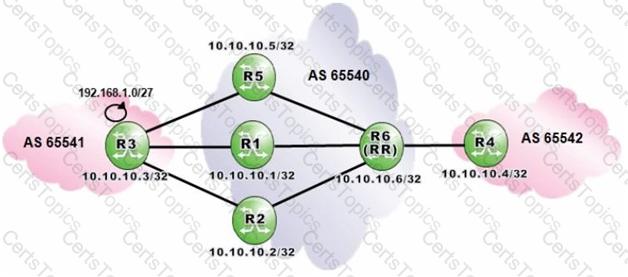
Router R6 is a route reflector with clients R1, R2 and R5. Router R3 advertises the prefix 192.168.1.0/27 to routers R1, R2 and R5. How many routes for prefix 192.168.1.0/27 will router R6 receive?
An OSPF router receives an update in which the sequence number, age, and checksum are the same as the entry already in the topological database. What action is taken by the router?
Exhibit
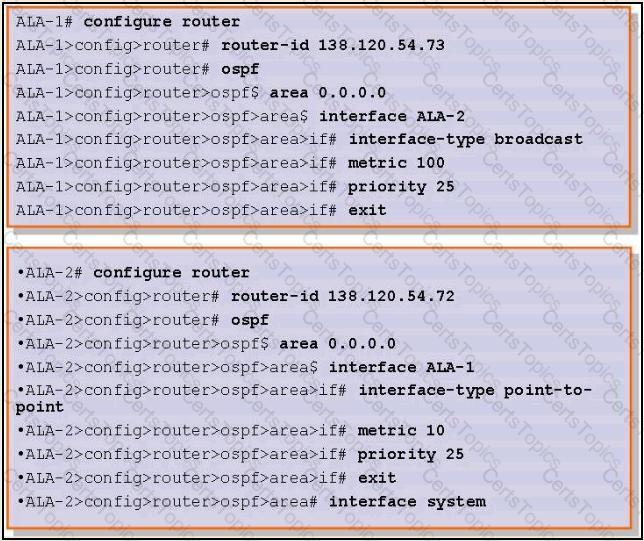
Given the two configurations shown, identify the two incorrect statements below: (Choose two)
Click on the exhibit.
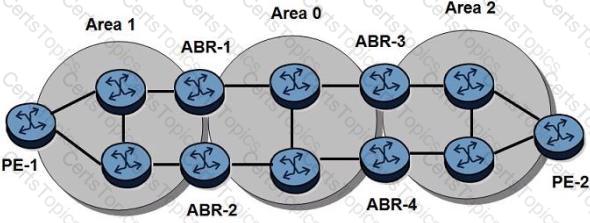
An LDP-over-RSVP tunnel is established between PE-1 and PE-2. Which of the following is NOT required to protect the LDP-over-RSVP tunnel?
Which of the following devices assumes the active role during the establishment of an LDP session?
Consider a device that uses per-platform label space; which of the following fields is NOT contained in the LFIB?
Click on the exhibit.

Which of the following is FALSE?
Which of the following is TRUE when the explicit null is implemented?
Click the exhibit button.
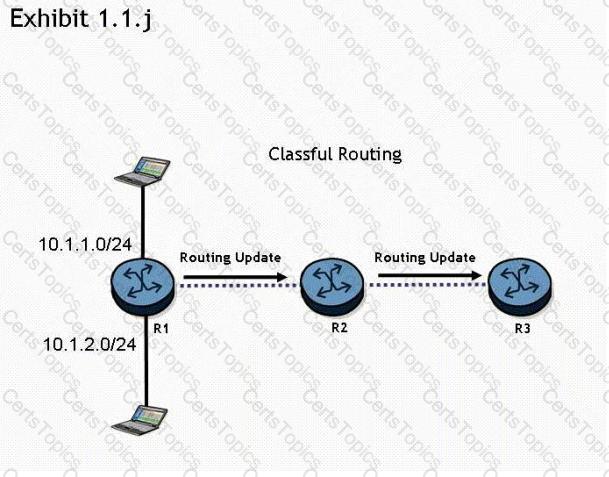
Routers R1 „ R2, and R3 are running a classful routing protocol between them. Assuming that router R1 advertises all directly connected networks, how will these networks be represented in router R3's routing table?
Which of the following regarding per-platform label space is TRUE?
Click on the exhibit.
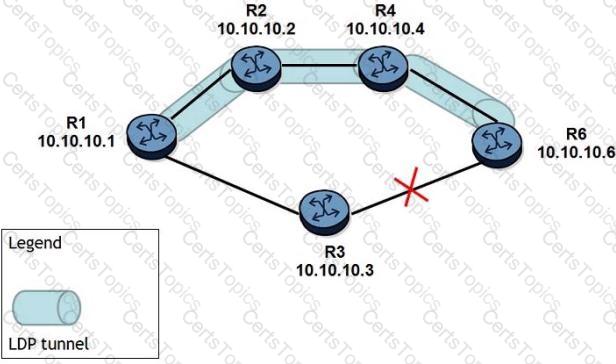
An LDP tunnel is established on R1-R2-R4-R6 because the link between routers R3 and R6 is down. With the LDP-IGP Sync feature enabled, what happens immediately after the link is restored?
Click the exhibit.
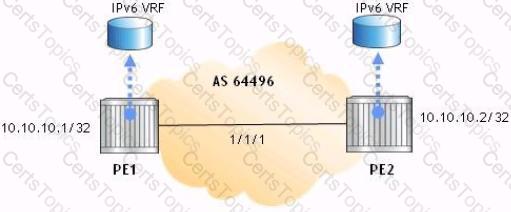
The two PEs are providing 6VPE and IPv4 VPRNs. The core network is IPv4/MPLS. Which of the following is the BGP family configuration for the MP-BPG on the PEs?
Which of the following about LSP path configuration on an Nokia 7750 SR is TRUE?
Click the exhibit button.
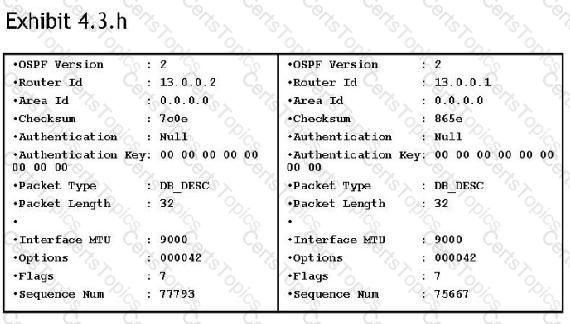
The OSPF packets shown have been exchanged between two neighbors. What state is the OSPF adjacency in?
Which of the following about VPLS MAC learning is FALSE?
Identify two attributes of Distance Vector Protocols: (Choose two)
Which of the following statements regarding BGP FRR is FALSE?
Click on the exhibit.
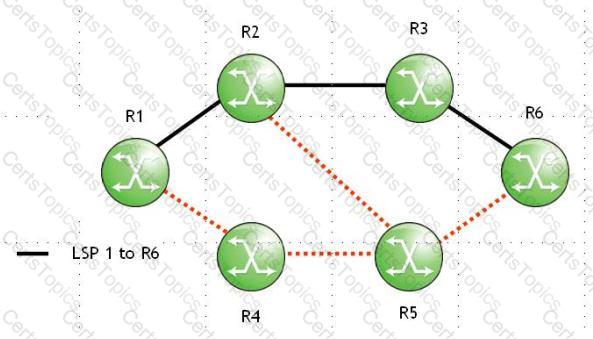
LSP 1's link between routers R3 and R6 has failed, and the RESV state at router R3 has timed out. Which of the following actions will router R3 initiate?
Click the exhibit button.
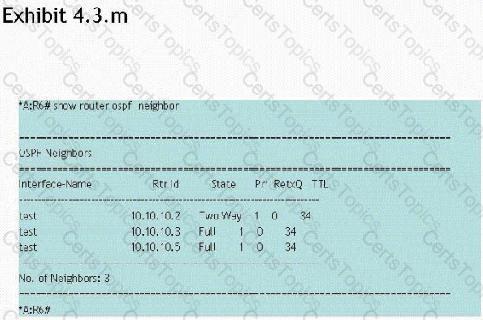
What can you deduce from the show command on router R6?
If an Nokia 7750 SR is an iLER operating in pipe mode, which of the following regarding the TC field (EXP bits) is TRUE?
Click the exhibit.
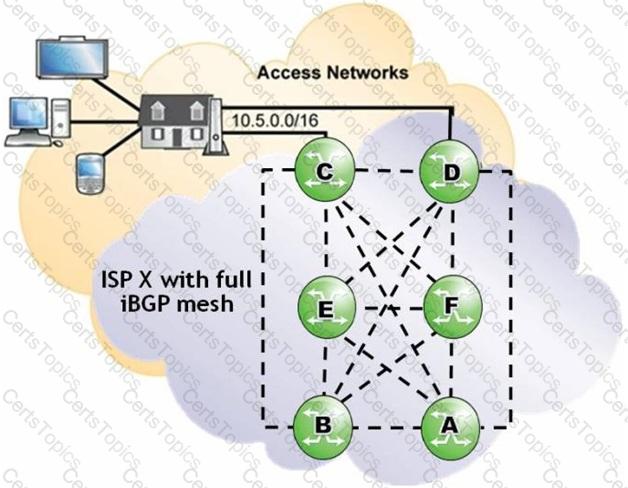
Considering that both routers C and D are advertising the eBGP learned prefix 10.5.0.0/16 into
ISP X, which of the following best describes the route advertisement within ISP X?
How many service labels must be signaled to bring up a fully-meshed VPLS among three PE routers?
What must be configured on the Nokia 7750 SR for RIP to advertise locally attached links?
Click the exhibit.
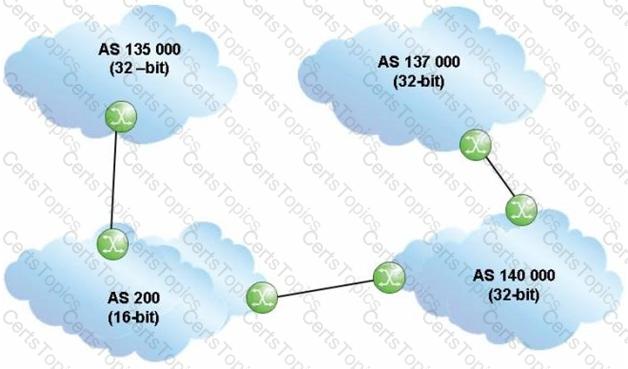
An update travels from AS 137000 to AS 135000, traversing both 32-bit and 16-bit AS Paths.
What AS Path is seen by AS 200?
Which of the following is TRUE if the local state of BGP is OpenConfirm?
Which of the following statements regarding Internet Exchange Points is FALSE?
Click the exhibit button.
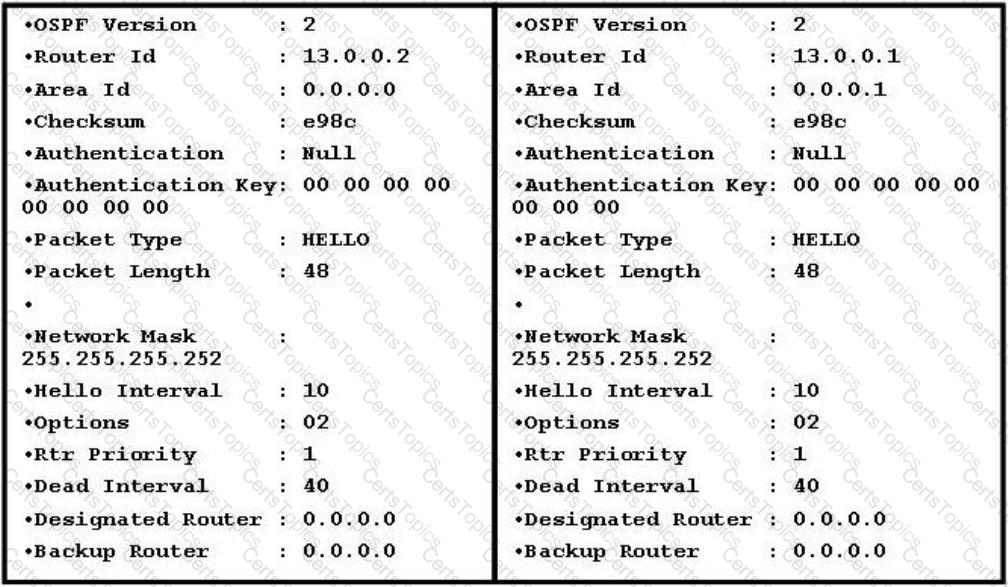
Two neighboring OSPF routers have exchanged the packets shown. What state is the adjacency in?
An Nokia 7750 SR is configured with an export policy to redistribute its directly-connected networks into BGP. Which of the following databases contains the routes for these networks?
Click on the exhibit.

The route table on router R2 shows the system address of router R5 but it does not show any of the interfaces from the non-OSPF area.
What may be causing this?